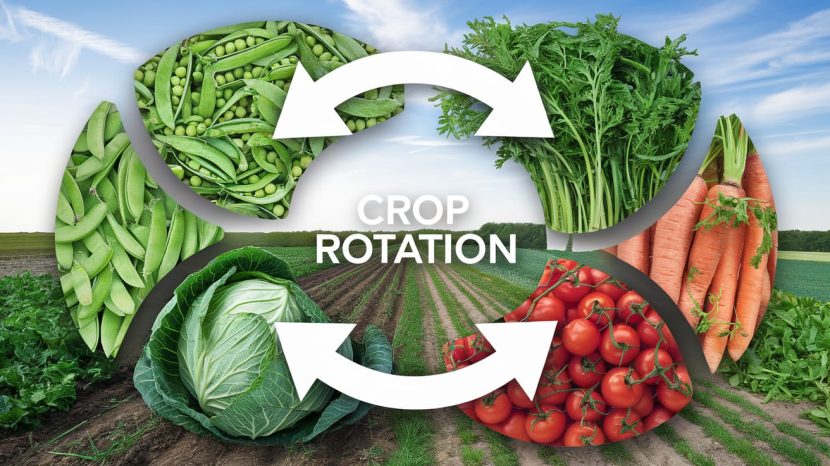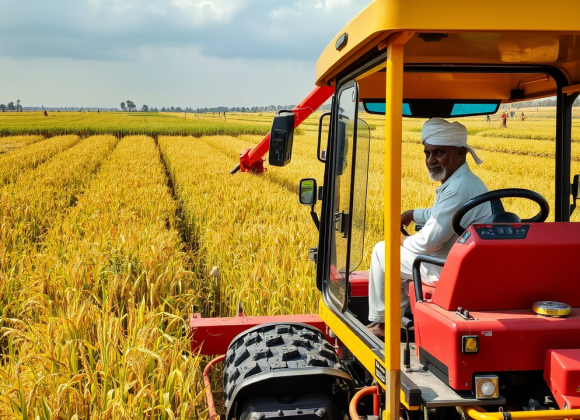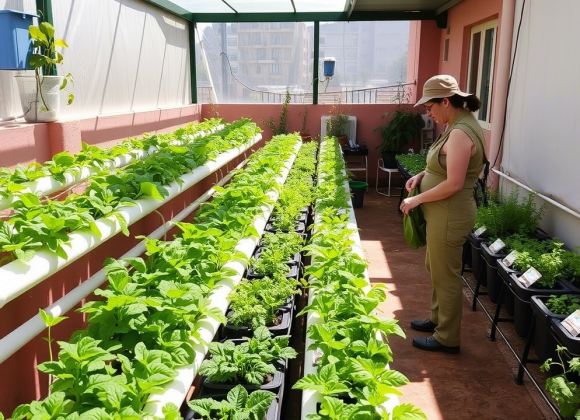In today’s world, where farming needs to be more sustainable and soil health is a top priority, many farmers and gardeners are turning to an age-old method—crop rotation. This practice, which has been used for centuries, isn’t just a piece of farming history; it’s a practical solution to some of today’s biggest farming problems, like poor soil and pest issues.
So, what is crop rotation all about? And why has it been a go-to strategy for growing healthier and stronger crops for so long? Let’s dive in and explore how this simple change in planting can lead to better soil, bigger harvests, and a healthier planet.
So, what exactly is crop rotation?
Crop rotation is the intentional planting of different crop species in the same field across successive growing seasons. Unlike monoculture, where the same crop is grown repeatedly, rotation ensures diversity—not just above the soil, but within it.
Each plant family interacts differently with the soil and surrounding environment. Some deplete certain nutrients, while others restore them. By rotating crops—like legumes, cereals, brassicas, and root vegetables—you maintain a balance in soil nutrition and reduce biological threats like pests and diseases.
A simple 4-year crop rotation plan might look like

This sequence helps reduce soil fatigue and builds a healthier farm ecosystem over time.
Read more: about Crop Rotation
Why is Crop Rotation Important?
Let’s dig deeper into the key environmental, economic, and agronomic reasons why crop rotation is hailed as a pillar of sustainable agriculture.
1. Improves Soil Fertility—Naturally
Some crops are heavy feeders, while others, like legumes, give back. Legumes, for instance, harbor nitrogen-fixing bacteria (Rhizobia) in their root nodules, converting atmospheric nitrogen into a form that plants can use. This natural fertilization reduces dependence on synthetic nitrogen fertilizers.
🧪 Learn more about nitrogen fixation and legume benefits (USDA PDF)
2. Disrupts Pest and Disease Cycles
Many crop diseases and pests are host-specific. Repeating the same crop allows them to flourish. Rotation interrupts these life cycles. For example, rotating brassicas with non-brassica crops breaks the cycle of soil-borne diseases like clubroot.
3. Enhances Soil Structure and Organic Content
Different crops have varying root architectures. Deep-rooted plants like alfalfa help break compact soil layers, while fibrous roots improve soil porosity. Rotating these plants contributes to better aeration, water retention, and increased organic matter—a cornerstone of soil health.
4. Boosts Long-Term Productivity
Healthy soil leads to healthy crops. Long-term studies show that rotational farming systems consistently outperform monocultures in yield and quality—especially under adverse weather conditions.
5. Supports Climate-Smart and Regenerative Farming
It reduces the need for external inputs, helping lower agricultural carbon footprints. It aligns with regenerative practices like carbon sequestration, biodiversity promotion, and water conservation—essential in a changing climate.
🌎 Discover principles of regenerative agriculture
Bonus Benefits of Crop Rotation
- Reduces Soil Erosion—Crop rotation shields topsoil from wind and rain.
- Encourages Biodiversity—Supports diverse insects and microbes.
- Lowers Input Costs—Cuts down on pesticides, fertilizers, and water.
Modern Crop Rotation Meets Smart Tech
Today’s farmers can use cutting-edge tools to plan rotations with precision. AI farm planners, soil testing apps, and drone surveillance make it easier than ever to assess soil needs and rotate crops effectively.
Tools to Try:
- AgriApp—Crop recommendations, nutrient insights, and pest alerts.
- CropIn—Smart analytics and forecasting for large-scale rotation planning.
Combining age-old knowledge with modern innovation is the future of sustainable agriculture.
Final Thoughts
Crop rotation isn’t just a technique—it’s a philosophy of reciprocity between farmer and earth. It respects nature’s rhythms, minimizes waste, and creates a self-sustaining loop of fertility and abundance. In a world facing soil degradation and food security challenges, it offers a beacon of balance.




